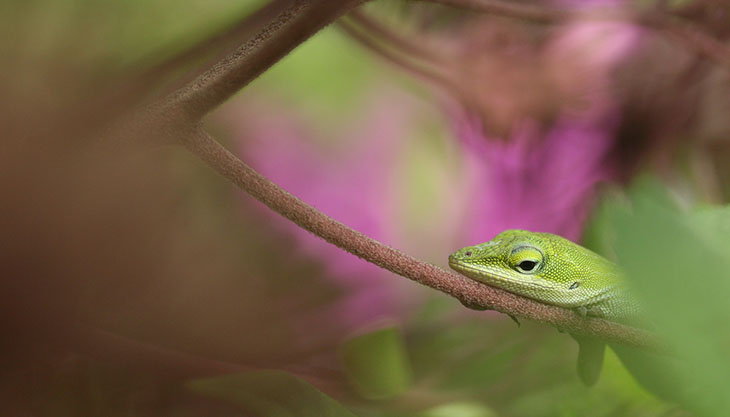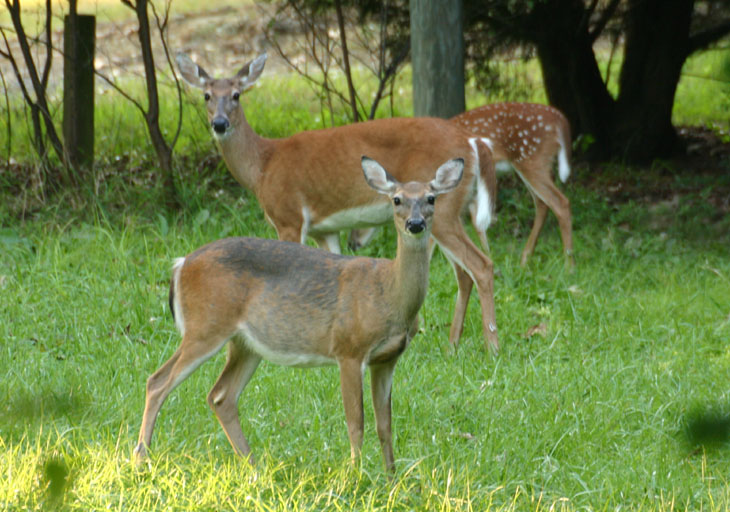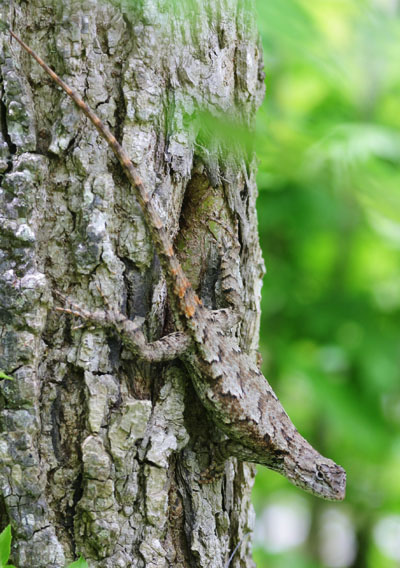You know, there are a lot of misconceptions about animal psychology and behavior out there, and they’re all over the map. I’m going to address a few of the more prevalent ones here, with the hopes of at least promoting a little more perspective and forethought among the topics.
Let’s get one thing out of the way right from the start: “animal” is a simple but broad definition that, yes, includes humans – not to be flippant, but we are not vegetables or minerals. More on this shortly.
Curiously, our own behavioral traits bear a lot of responsibility for these misconceptions, in two different directions too. The first is the egotistical aspect, hinted at above. We place ourselves quite high in importance, which is a useful survival trait, and not only separate ourselves from other species, but from other humans on remarkably arbitrary criteria. We look at other species that cannot talk or build bicycles and find them “lower,” unworthy of our awesome status. We are the only species with “culture” and behavioral standards (or so we often believe,) and thus, when we see critters that mate right out in public or won’t say, “Bless you,” when we sneeze, we find them savage and unworthy. Therefore, calling someone an animal is usually an insult to varying degrees, except for those overheated occasions when it’s a naughty compliment (lots of psychological angles on that alone, but we’ll leave them for another post.)
Yet a lot of our own behavior is cultural, which only exists because we’re inordinately focused on what other people think. Saying, “Bless you,” is remarkably stupid, for countless reasons, but it’s not hard to find those who agonize over the necessity of it following a sneeze – because they think everyone else expects it, and this is pertinent somehow. Not exactly an example of higher intellect, though. And there are other cultural influences as well, such as the religious angle that mankind was created with a special status, a separation from “the animals” [get used to a lot of sarcasm-quotes in this post] and of course the special intentions and attentions from the creator. Much of the resistance to evolution in this country focuses on this perspective and the distaste this fosters for those lower life forms. But we are not in any way distinctive in terms of life on this planet – while we have traits that are unique to our species, so does every other species. From an ecological standpoint, if a species is surviving, it has the necessary traits and behaviors for its niche in the system. And for all our vaunted intellect, we’re in a constant battle with microorganisms – seriously, viruses! Not even able to move on their own, yet capable of killing us by co-opting our own cells against us. Let’s not let our egos carry us away.
I feel the need to mention that nothing we do on this planet is “unnatural,” either – we weren’t introduced here by aliens or whatever. Having distaste over pollution and industrialization is fine, commendable really, but this doesn’t make them any less a part of the ecosystem than the devastation wrought by “pest” insects. It would be nice if that intellect we treasure made us capable of preventing the bits we find distasteful, handling our garbage and overcrowding in much better ways, but we’re also pretty focused on convenience, for all the importance that has…

And then we have the other behavioral trait that leads to so many instances of misconceptions and bizarre expectations, and that’s the assumption that other species actually think like we do. This appears everywhere, from those who get frustrated because their dogs are not following instructions to those who find some spiritual bond with dolphins or whatever. Let’s be direct: there are no other species that think like we do, and no reason for them to do so. They have their own demands for survival, their own behavioral traits to assist with this. There are, in some cases, analogs of human ideas. Singular examples of two different species might become “friends,” or at least, enjoy and prefer one another’s company. Dogs can display recognition of particular words. Yet it’s important to realize that not everything is as we interpret it; dogs are far more likely to respond not to words, but to their delivery, the apparent emotions behind them, and the patterns of our own behavior, since dogs are far more attuned to behavior than speech, which they have no use for nor the areas of the brain necessary to comprehend them. Their environment, bred into them for millions of years, embraces pack behavior above all else, which requires reading the unspoken cues from others within the pack, but with thousands of years of human-directed breeding, this is often packaged with herding instincts, or chasing down particular prey, or aggressive defense of a territory. While we might gauge behavior from a standpoint of abstracts and language, dogs will usually gauge their behavior on pack dynamics and whether some action warrants a specific response. Part of the difficulty is, we honestly don’t know, and it’s only through some esoteric tricks that we can have any inkling.
Look at it this way. A significant amount of human interaction can revolve around not knowing whether someone’s comment was innocent or snarky, an unthinking rejoinder or a calculated slight; we spend a lot of time “reading between the lines” to try and correctly interpret words that we have firm definitions for. Step into another culture, and we may provoke grave offense from being unaware that showing the sole of our foot to someone is insulting there, which bears just as much fault from the people within that culture not understanding that we don’t interpret the gesture in that manner. To think that we can confidently interpret the thought processes of other species is being remarkably naïve.
Moreover, the vast majority of it is simply wishful thinking. While we might like to believe that Koko the gorilla recognized Robin Williams’ unique traits enough to actually be sad at his passing, some critical examination is definitely called for. A lot of species might have recognition of positive interactions with another species, or just individuals therein, and this may truly result in some regret when the interaction ends. Is it safe to call this “friendship,” or any analog thereof? That’s probably jumping the gun by a significant margin, especially considering all of the implications and assumptions that the term fosters within us. And did Koko place Robin Williams higher in “esteem” than anyone else that engaged in tickle bouts with her? How often does it occur to anyone to even wonder about that? We cannot, in good science or good conscience, view this interaction through the perspective that we view interactions within our own species. Hell, even a human toddler informed of “bedtime” may erupt into an end-of-the-world tantrum, all out of proportion to the nature of the offense – we may be used to it, but not really understand it (or some other behaviors as well,) and this is our own species.
From my years working in animal shelters, I had plenty of exposure to feral cats – domestic cat breeds that had adapted to living on their own in “the wild.” I had a basic guideline measurement for kittens: if they’d reached four months of age without human interaction, they were highly unlikely to tame down to being a house pet. At all. In fact, two of my former pets were cats specifically on this border, who I’d taken home and fostered to try and get them used to people. One took to me well but remained wary enough of strangers that I didn’t believe she would ever get adopted when brought back into the shelter; the other remained somewhat spastic her entire life – 16 years, and still capable of hissing at me in alarm if I walked into the room suddenly (but otherwise normally affectionate.) Bear in mind these are a species that has been domesticated for thousands of years – it doesn’t hold a candle to the millions of years of developing survival traits, and is testament to the idea that acceptance of humans is likely more conditioning since birth than an actual trait the species possesses.
Most other species, of course, have no such conditioning, much less the domestication. They live in environments where danger is frequent, and their interactions among their own kind is geared towards that which is specific to their niche in the ecosystem. Humans have tribes, and require a cohesiveness for cooperative functions such as hunting, harvesting, and maintaining large scale shelters, which now extends to grocery stores and maintained roads. We might feel a parallel with the herding behavior of deer, but these are only weakly related; deer have specific ideas of who belongs in the herd and what behavior is acceptable therein. They also have specific ideas of defense, used against dogs and coyotes and wolves and even other deer, and are quite capable of wielding these whenever they feel it’s necessary – and unless we’ve spent a lot of time observing deer (while asking, like Koko above, exactly what we’re observing,) we can never be sure when we’re crossing the line until the attack comes. That’s not really a good time to find out.

We can’t, naturally, use our own judgment as to what will trigger defensive behavior, because we inhabit different environments with different demands. The concept of “too close” depends on how fast the threatened species can run, which escape route is the best, and wildly variable factors such as whether young are involved or whether it’s mating season. These might seem obvious – we’ve all seen nature documentaries, and know not to mess with bear cubs and all that – but one of the biggest stumbling blocks is never having the presence of mind to even think about it. Far too often, we can see some species and think, “Awwwwww,” reacting to appearance without engaging in rational examination. We believe that approaching a trapped or injured animal will be viewed with appreciation because we’re only trying to help it, and somehow the animal will not feel extra-threatened because it is far more vulnerable. We examine wildlife with the assurance that “it doesn’t look angry,” without having the faintest idea what angry looks like. Also quite often, we figure that we’ve gotten this far and nothing bad has happened, so it must be okay to go further. Just thinking about that for a moment reveals the absurdity of the conclusion, but it takes that moment of thought.
Worse, far worse, are the claims of “spirituality,” and “connection,” and any related ideas where humans somehow have a bond or mystical attachment with any other species. Addressing the mindset which leads to such conclusions would take far more effort than I’m going to put into it here, and far more experience in psycho-analysis than I have, so let’s just put it simply: it’s horseshit. We’ve been studying animal behavior for a long time, and have determined some very nuanced aspects, and nothing whatsoever has come up to support some paranormal method of bonding or communicating with any other species, even as we have discovered how many species can detect magnetic lines and just how sensitive their olfactory receptors can be. Evidence of how often humans can misinterpret awe and desire as something transcendent, however, we have abundant examples of, millions. The problem with such egotistical beliefs is that they provoke people into ignoring everything that rational thought can tell them, every advantage that big elaborate brains can provide, in favor of some base emotional prod that only spells misappplied survival instincts. But if it helps, had humans or our ancestors ever developed the sense of bonding with any species in order to approach it safely, it would have eliminated the need for hunting with weapons – at least until the same species evolved away from believing that shit.

From a photography or even naturalism standpoint, understanding the different perspective that animals will have on any given situation is important, yet difficult. While there are tricks to help improve results, they remain only tricks, and do not provide a lot in the way of understanding the behavior of any species (especially when the “personality” of any individual is as variable as humans can be, even when some overall traits can be found within a particular species.) Scientists like Jane Goodall do not spend decades in careful observation because fathoming animal behavior is a quick and easy skill to develop.
Notably, the awe we may feel, the kinship, the connection, should immediately be considered suspect, rather than believed or indulged. Humans have no reason nor useful function in possessing such a bond, nor does any species have a reason to possess one in return (and as a moment’s thought will demonstrate, it would probably be extremely detrimental to most – while a bond with any particular individual might be beneficial, bonding with our gun-happy neighbors is not.) The species that have become domesticated have done so over thousands of years and, in most cases, can switch back very quickly – witness the feral cat, dog, horse, and pig populations that can be found in various locations on the planet.
And for those on the other side of the coin, that feel that “animal instinct” is somehow a derogatory term, recognize that evolution tends to be pretty efficient. Every species alive right now has what it takes to survive within the ecosystem, even when it may not last much longer for a few of them. While no other species but us can play with smutphones, they don’t waste ridiculous amounts of resources in producing and maintaining these toys either, much less provoke the mass extinctions that we do. Those with insecurity issues might feel the need to sneer down upon other species, but the rest of us can accept the life on this planet as it is – perhaps with a little extra effort and examination.




















































